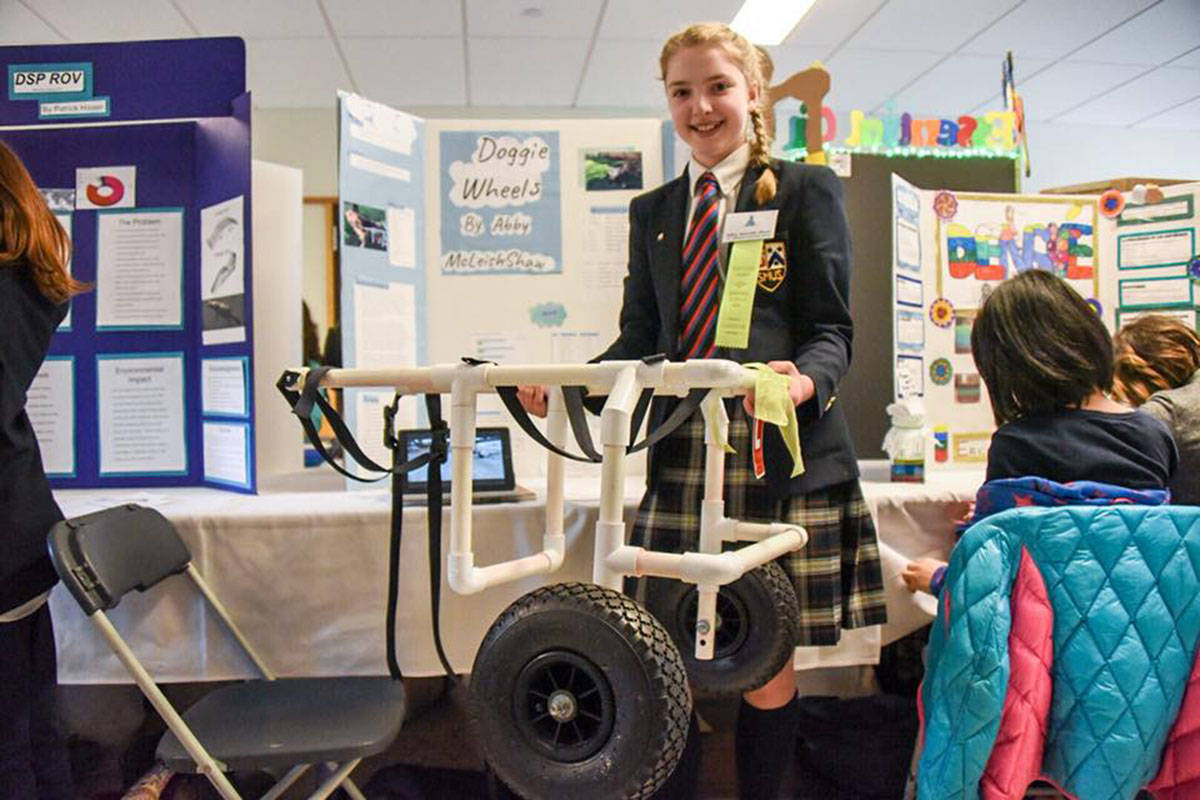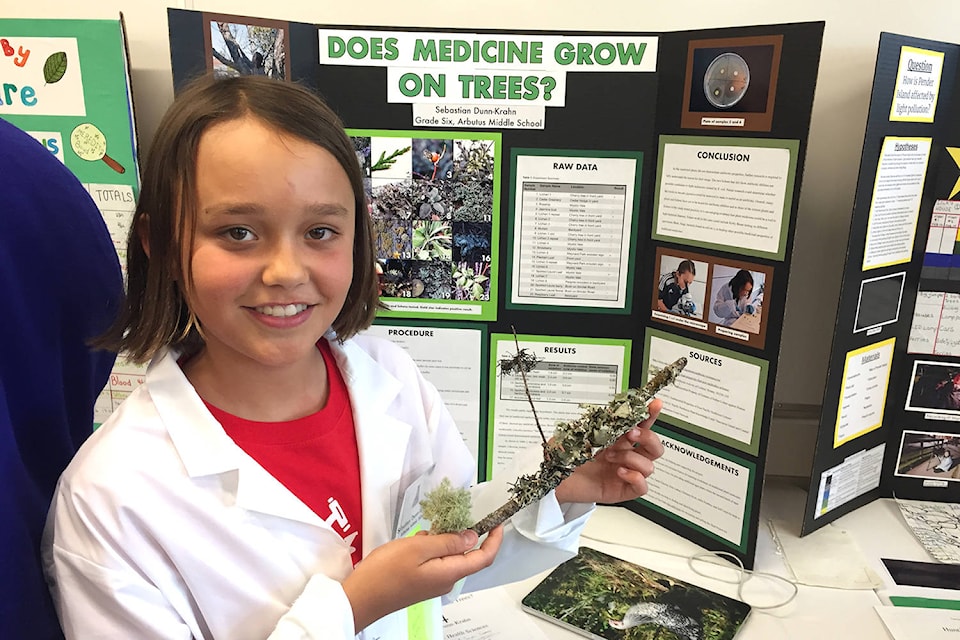Can algae power future greenhouses? Does medicine grow on trees?
These are some of the questions that aspiring scientists tried to answer during the 2018 Vancouver Island Regional Science Fair held Sunday and Monday at the University of Victoria.
Zofka Svec, a Grade 10 Glenlyon Norfolk School student, studied the first question with the help of algae from Saanich’s Beaver Lake in building a microbial full cell (MFC).
Algae, just like any other plant, need sunlight to survive, using photosynthesis to create energy in the form of glucose, she said. “This [process] creates energy.” In fact, it creates surplus energy, which can power greenhouse lights.
Svec’s MFC process looks (at least to the untrained eyes) deceptively simple. It consists of a small cube divided into two sections by a membrane thin enough to allow electrons and protons to pass: one filled with clean water, the other filled with algae-rich water, not unlike the water in Beaver Lake, where algae frequently bloom. Two electrodes connected by a wire turn the contraption into the battery, with the energy from the algae-rich water travelling into algae-free water, from where it then powers a small LED light.
The amount of energy this process creates is relatively small, about 1.2 kilowatts during overcast days, but nonetheless impressive considering the size of the battery, which resembles an oversized Rubik’s Cube.
“The application for this cell would be agriculture,” she said. “It doesn’t produce a lot of energy, but it produces it quite consistently, and it doesn’t have any negative environmental effects, other than obtaining the material.” In fact, Svec used this cell to grow four tomato plants.
Agriculture is undergoing a transformation, said Svec. As concerns about the effects of fertilizer and carbon-based energy sources increase, MFCs offer an alternative, she said.
A search for alternatives also inspired Sebastian Dunn-Krahn to ask whether medicine grows on trees.
The Grade 6 Arbutus middle school student specifically looked for ways to conquer antibiotic resistance by looking for natural alternatives to synthetic antibiotics.
Using the Kirby-Bauer antibiotic test, he examined whether 16 different plants and lichens collected in the Cadboro Bay neighbourhood of Saanich inhibited the growth of E.coli bacterium, whose virulent versions can cause serious gastrointestinal diseases.
“There are a lot of strains of E.coli right now that are not affected by normal medicines,” he said. In the end, he discovered two types of lichens and one plant that could be used to treat the disease.
“I like testing the different plants, and I would like to become a biochemist down the line,” he said. “I want to able to use plants and lichens to bring new different medicines to the table, and to provide a more sustainable way to create medicine.”
These two projects were among 130 projects presented during the fair. Overall, 170 students from Grade 4 through Grade 12 representing schools from Greater Victoria, the Gulf Islands and Nanaimo participated, said Andrea Chan, a president of the Society for the Advancement of Young Scientists. Projects covered the subjects of biology, chemistry, physics, mathematics, engineering and health sciences, with engineering and biology dominating.
For example, Nicolas Fedrigo of Claremont looked into ways to improve spinal fusion treatment, while Abby McLeish-Shaw of St. Michaels University School created a wheelchair for her German shepherd Tessa, who suffers from spinal stenosis.
“There are a lot of students who want to make things and improve every day life,” said Chan, the first female president of the society and an aspiring science teacher.
While projects vary in their complexity, the overall quality improves with each year. “Every year, they get more and more sophisticated,” she said.
For a list of winners, check out the Vancouver Island Regional Science Fair site.
And while this year’s competition has barely wrapped up, Chan is already encouraging budding scientists to participate in next year’s science fair.
“Don’t be afraid to enter,” she said. “Every idea is phenomenal in its own way.”

